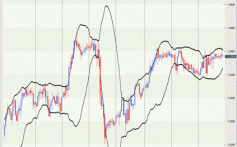Piecing Together The Indexing Jigsaw
Post on: 16 Март, 2015 No Comment

To most investors the stock market benchmark index providers are the face of the index industry. Strongly associated with domestic stock exchanges, the likes of S&P and FTSE have developed well-known brands and are synonymous with the markets they index.
Independent index providers have grown significantly over the last decade and most now cover a range of different asset classes. Index platforms are data- and technology-intensive, but independent providers have been able to develop custom index and in-sourcing businesses. Both these areas of activity have generated important new revenue streams.
Much in the news of late, investment bank “delta-one” desks are involved in various types of index-related trading, ranging from the provision of total return swaps on indices or stock “baskets”, to market making in ETPs. Many banks are also active in issuing ETPs. The first ETNs were issued by an investment bank, while in Europe several investment banks have also developed in-house fund structuring teams. On the index front, the provision of fixed income indices is dominated by the investment banks’ index groups, usually housed within the firms’ research divisions. Investment banks also constitute the major providers of strategy indices.
The success of the ETF market has spurred the creation of a new breed of independent ETP providers, for example ETF Securities, Source and Ossiam in Europe. These new entrants typically partner with investment banks to provide index-based products.
Piecing Together The Product
At the heart of every ETP is an investment methodology—typically (but, as we’ll see, not always) embedded within the index that the product tracks. At its simplest this may be a market benchmark tracking the returns of a specific market or market segment. ETPs can also be constructed around investment themes and strategies, which are normally embedded in an index. The investment methodology (index) forms the main piece of intellectual property in the ETP business.
A robust and accurate index calculation and publishing platform is now a prerequisite for an index to be eligible for use in an ETP. The majority of exchanges require real-time index levels for ETFs and notes, and index closing levels need to be available near to the underlying market’s closing time.
As well as calculating and publishing real-time and official (end-of-day) net asset values (NAVs), an ETP issuer needs to link to various execution venues (so-called “wrap” platforms and brokers), and to the exchanges on which products are listed.
In Europe there are two primary methods by which ETPs deliver index returns. Physical replication is the original method for ETFs, whereby a portfolio of instruments is held in the fund to match those held by the index. This portfolio can either match the index stock for stock, or be based on a sampling methodology. With synthetic replication, the economic exposure to the fund’s underlying index is obtained via a swap, an over-the-counter derivative written by a third party, typically an investment bank.














